Table of contents
Since vanilla pods are blanched at high temperatures after harvesting to stop the ripening process, the commercially available pods are no longer raw food . They are usually the fermented capsule fruits of the vanilla bean ( Vanilla planifolia ) .
Using vanilla pods in the kitchen:
Vanilla pods, likevanilla powder or vanilla extract , are particularly suitable for desserts due to their sweet, spicy taste. Bourbon vanilla is a designation of origin.
This aromatic spice is very popular in cocoa mixtures and chocolate . Vanilla pulp is added to many desserts such as cakes , puddings , creams , compotes, quark dishes, fruit desserts or ice creams to add flavor. The taste of real vanilla goes excellently with drinks such as punch or liqueur. Real vanilla is even included in soft drinks such as cola, as consumers did not like the synthetic vanillin. Vanilla is also used in meat and fish dishes and some top chefs perfect their tomato salad with the pulp of a vanilla pod.
To enhance an entire dish with the aromatic vanilla flavor, only a very small amount of real vanilla pulp from the vanilla pod is needed. A small pinch is enough to give the dish a mild, floral vanilla note.
The Aztecs also enjoyed their power drink with vanilla: Xocolatl was a type of drinking chocolate. It consisted of water , cocoa powder , spices, honey and vanilla.
Cooking with vanilla pods:
To refine a dish with natural vanilla, you first have to remove the pulp from the vanilla pod. To do this, cut off both ends of the vanilla pod and carefully slit it lengthways. Make sure that you do not cut all the way through the vanilla pod so that the pulp can be removed more easily afterwards. You can now open the pod and carefully scrape out the inner pulp with a sharp knife.
This black paste with oily liquid contains a lot of aroma, chemically known as vanillin. The small black dots surrounded by the pulp are the seeds of the vanilla plant. The "empty" vanilla pod is actually the most aromatic. Its aromas can be extracted by boiling it in a liquid. After a drying phase, a pod can even be used several times. To do this, you have to rinse it with hot water after use and then let it dry thoroughly again.
If you add the vanilla pod (organic) to food (e.g. sugar ), it will very quickly absorb the vanilla aroma and you will get, for example, a finely flavored vanilla sugar.
Recipe for making vanilla powder from vanilla pods:
The vanilla pods (organic) are dried in the oven at less than 50 °C until they are easy to break. Then put the pods in a spice mill and grind them intovanilla powder (keywords: drying vanilla pods, grinding vanilla pods).
This homemade aromatic powder is stored in small screw-top jars and placed in a dark place. The powder is very easy to portion out when cooking. This also means that you use the whole pod and not just part of it.
Commercially available vanilla powder may be of inferior quality and contain hardly any vanilla flavor. In this case, it only serves to give the product the black dots.
Vegan recipes with vanilla pods can be found under the note: " Recipes that have the most of this ingredient ".
| Not only vegans or vegetarians should read this: Vegans often eat unhealthily. Avoidable nutritional mistakes . |
Shopping - where to buy vanilla pods?
Almost all supermarket chains such as Coop , Migros , Denner , Volg , Spar , Aldi , Lidl , Rewe , Edeka , Hofer etc. offer vanilla sugar with real Bourbon vanilla. Whole vanilla pods (organic?) are often only available in selected supermarkets all year round. In the run-up to Christmas, they are also available in discount stores. Vanilla pods are always airtight, usually individually packed in a small glass tube or vacuum-packed in a bag.
What is real vanilla? The spiced vanilla can be recognized by the designations of origin "Bourbon vanilla" (Bourbon vanilla, Bourbon vanilla pods) or "Mexican vanilla". Please note: the lower the price per pod, the lower the quality.
To get high-quality pods, you should look for an oily surface and an elastic, leathery consistency of the vanilla pod when buying. If the vanilla pods are grey, hard and brittle, they are of inferior quality and no longer suitable for purchase. Prefer organic quality from a health food store, organic shop or organic supermarket (such as Denn's Biomarkt or Alnatura ). Organically produced vanilla (organic) is not contaminated with pesticides.
How much does 1 kilo of vanilla cost? Vanilla is one of the most expensive spices in the world. Only saffron is more expensive. The price of real vanilla is also subject to fluctuations on the world market, and has risen sharply since 2014. Previously, 1 kg cost around 30 USD, but today you pay up to 600 USD for it, more than silver (which cost around 400 USD in 2018). The reason: The demand for natural vanilla has increased sharply. 1
Storing Bourbon vanilla:
To ensure that the vanilla aroma lasts for a long time, the pods should be stored in a dark, airtight and cool place. The small glass tubes are ideal for this type of storage because they have a plastic lid or cork. Sealable containers or small plastic bags with a seal are also suitable. It is important not to store vanilla pods in the refrigerator because additional moisture encourages mold growth.
After some time, crystals can form on the vanilla pods, a kind of frost. This is a natural process that is even considered a quality feature for real vanilla pods and should not be confused with mold.
Found in the wild:
Where does vanilla grow? The only orchid species that is used as a spice plant also grows wild in Venezuela and on the Caribbean islands.
Ingredients - nutritional values - calories:
Here we realistically show you the ingredients of spices and herbs per 1 g (instead of per 100 g as usual).
The fermented vanilla pod contains 3.18 kcal/1g. It consists mainly of carbohydrates (80%), which contain a lot of sugar (glucose, fructose, sucrose) and fiber. Vanilla has little fat (3.2%) and also little protein (3.9%). The most important flavoring agent in vanilla is vanillin, which makes up between 1.5 and 3.7%, and there are also phenols, phenol ethers, acids and aliphatic alcohols.
The amount of minerals and trace elements should not be underestimated. However, we consume so little spices that these figures are actually negligible: Bourbon vanilla contains 0.06 mg of manganese per gram. Oats (0.05 mg) and fennel seeds (0.07 mg) also contain a similar amount. 2
The iron content is considerable at 0.38 mg/1g. This value is exceeded by bay laurel (0.43 mg), ground turmeric (0.55 mg), wild mallow (0.78 mg) or dried thyme (1.23 mg). 2
The calcium content is similar: Bourbon vanilla provides 12.3 mg Ca per gram. In comparison, poppy seeds have 14.4 mg or fenugreek leaves (raw) have 32.8 mg/1g. 2
Vanilla pods also contain potassium , zinc and some magnesium .
The complete ingredients of the vanilla pod, the coverage of the daily requirement and comparison values with other ingredients can be found in our nutrient tables. In the article Nutrients explained you will get a detailed insight into the topic.
Health aspects - effects:
True vanilla has many uses. Externally, the vanilla plant is said to help with fungal infections. It has a fungicidal, antimicrobial and anti-inflammatory effect. 11 It is used especially for skin diseases such as neurodermatitis and eczema.
Studies show that vanilla contains antioxidant substances. These are said to protect DNA and help prevent mutations that cause cancer. 3 Extracts from the roots of the vanilla plant show acetylcholinesterase-inhibiting activities that can cure Alzheimer's. Studies on this have been carried out in India. 4 The vanilla spice is also contained in medications for chronic bronchitis and catarrh. 5
Dangers - Intolerances - Side effects:
Contact allergies can occur during the harvesting of vanilla pods, such as skin rashes, but also headaches and insomnia. Allergic symptoms also sometimes occur after eating foods containing vanilla, such as hives or facial swelling. 10
Folk medicine - natural healing:
Vanilla is said to have a nerve-strengthening effect and is also said to have a soothing effect on menstrual cramps or morning sickness.
The scent of vanilla was used by Indian women in ancient Mexico as an aphrodisiac. The sweet aroma is said to not only strengthen the entire organism, but also to attract men in particular and increase sexual desire. The aroma can still be found in many perfumes today. 5
Occurrence - origin - ecology:
Back to the question: Where does vanilla grow? Vanilla ( Vanilla planifolia ) originally comes from Mexico and Central America. The Incas and Aztecs used vanilla to season their food. It was the Spanish who brought the vanilla plant to Europe. Today, the known growing areas for vanilla are mainly islands such as Madagascar, the Comoros and La Réunion, but also Mexico, Mauritius, Indonesia, the Seychelles and others.
When people talk about vanilla, they usually mean spiced vanilla or real vanilla ( Vanilla planifolia Andrews). The vanilla from Madagascar, the Comoros, La Réunion, the Seychelles and Mauritius (= Bourbon vanilla) is particularly popular with Europeans. La Réunion used to be called Île Bourbon, hence the special name. Spiced vanilla has a very intense, harmonious aroma. Americans prefer the spiced vanilla from Mexico: it tastes sweeter, more subtle and is a little softer. Vanilla from Indonesia has a woody, smoky aroma, which is popular in the perfume and spirits industry.
Other commercial varieties are Tahitian vanilla ( Vanilla tahitensis ) and Guadeloupe vanilla ( Vanilla pompona ). These have a strong floral scent but much less aroma. 6 They are more interesting for the cosmetics industry.
Cultivation - Harvest:
Vanilla plants are tropical climbing plants that can climb up to 15 m high. On plantations, they are grown on living trees, sticks or racks. Vanilla plants produce a full harvest from the fourth year onwards. The work is very intensive and laborious, as most steps are done manually. Even the pollination of the beautiful, yellow flowers is done by humans, as the insects and hummingbirds required for this are missing in many areas. In addition, the flowers are only open for a few hours. 5 If a farmer pollinates 600 vanilla flowers, this results in around 7 kg of green or 1 kg of black vanilla pods.
The fruits can be harvested after about 6 months. Externally they resemble green beans, i.e. pods. Botanically speaking, however, they are capsule fruits. They are harvested in the yellow-green stage, shortly before they are ripe, when they are up to 30 cm long. At this point they have neither the typical vanilla taste nor the sweet aroma.
You can read about organic vanilla cultivation underground vanilla (organic?) .
Further processing of the vanilla pods - Fermentation:
The characteristic vanilla scent only develops after a complicated fermentation and oxidation process. To stop the ripening process, the fruits are treated with hot air and hot water at around 60 °C. They can then be fermented and the vanilla pods left to dry. 7,8
In the classic method, the pods are placed in hot water baths to blanch them. They are then left to "sweat" or ferment in padded boxes or thick blankets. To dry, they are laid out in the hot tropical sun, where they shrink into the shiny black-brown vanilla pods we know. This process takes up to four weeks and explains the high price that people pay for the spice. 5 The drying and fermentation process converts the precursors of vanillin into vanillin, the main aromatic substance in vanilla.
Important criteria for trade are the vanillin content and the length of the pods. If the pods have defects (are they split or broken), they are further processed industrially into vanilla sugar or liquid extracts.
Ecological aspects of vanilla cultivation:
Farmers in the growing areas are often at the mercy of governments. In Madagascar, for example, growing vanilla is the only source of income for many farmers. They are only allowed to offer the black vanilla pods on a single day, and this is set by the government. If farmers need money earlier, they sell the green capsule fruits at much lower prices.
In addition, thefts occur again and again. Many farmers guard their harvest and, if necessary, defend it with weapons. The German Society for International Cooperation ( GIZ ) recommends that farmers in Madagascar also grow other products. The GIZ ensures fair prices and grants cheap loans.
Vanilla is now also growing in Europe. In the Netherlands, the plants are grown in greenhouses using new cultivation methods. If the supply of vanilla increases in the future, farmers in southern countries will face a price collapse. 1
Synthetic vanillin and dangers:
There is hardly any danger of confusion with the vanilla pod. However, synthetically produced vanillin , a substitute for real vanilla, was a threat to trade when it first appeared. In terms of taste, manufactured vanillin never comes close to natural vanilla extract , because the vanilla pod contains 50 other flavorings and more than 130 chemical compounds. However, biotechnologically produced or synthetic vanillin is used 300 times more in industry than natural vanilla (e.g. in sweets and baked goods, ice cream or yoghurt). Vanillin is much cheaper and also very simple to produce.
There are different ways to produce vanillin :
- Natural vanillin can be produced using molds and bacteria from ferulic acid or from the eugenol contained in clove oil. Ferulic acid usually comes from rice bran. 12,13,14 However, the substance can be a problem for allergy sufferers. 9
- Vanillin that is identical to nature can be produced synthetically in large quantities and cheaply. The starting material is the secondary plant substance guaiacol (from guaiac trees) or the lignin sulfonates that accrue during the wood pulping process (in paper production). The production takes place under high temperatures and high pressure and involves many processes such as oxidation, alkali treatment, extraction, distillation and crystallization. 12,13 Vanillin from lignin cannot be described as a natural flavoring. 13
- Synthetic vanillin: Today, ethyl vanillin is often used, which tastes two to four times more intense because it is even cheaper. This is an artificial (synthetic) flavoring that does not exist in nature. 15
The terminology is not always clear, which can confuse consumers. In 1986, the Advisory Committee for Environmentally Relevant Existing Substances ( BUA ) of the German Chemical Society identified artificially produced vanillin as having the highest risk level (+3), sparking controversy: it is said to be carcinogenic, mutagenic, DNA-damaging and chromosome-altering. The inaccuracy of the statement and the way the test was carried out has since been exposed. 16 The WHO and the European Food Safety Authority (EFSA) consider vanillin and ethyl vanillin to be non-genotoxic and have not issued any safety concerns when consumed as a flavouring. 17,18,19,20
General information:
The "queen of spices" belongs to the orchid family (Orchidaceae). There are about 110 species in the genus Vanilla , 15 of which produce aromatic capsules, the vanilla pods. The most important species in this genus is vanilla ( Vanilla planifolia ).
"Vanilla" comes from the French vanille, from the Spanish vainilla, where it means "small pod or pod". How do you pronounce vanilla? The pronunciation is close to French: German [ʋaˈnɪljə]/[ʋaˈnɪlə] - or in Swiss [ˈʋanɪl].
Why are vanilla dishes often light yellow? Many manufacturers who flavor their products with vanillin or real vanilla tell consumers the false impression that vanilla is yellow. This color is usually created by artificially adding carotenes. Classic dishes with vanilla often appear yellow because they contain chicken eggs. The assumption that vanilla is light yellow can only come from the yellow vanilla flower.
Alternative names:
The vanilla pod has various (also incorrect) spellings and alternative names: vanilla pod, vanilla pod (vanilla pods), bourbon vanilla pod, bourbon vanilla, bourbon vanilla, bourbon vanilla pods, vanilla pod, borbon, burbon.
In English the pod is called vanilla pod.
Literature - Sources:

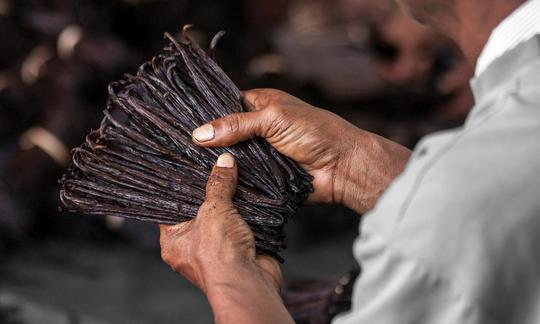

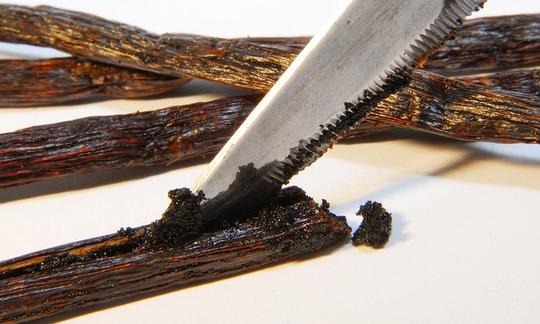

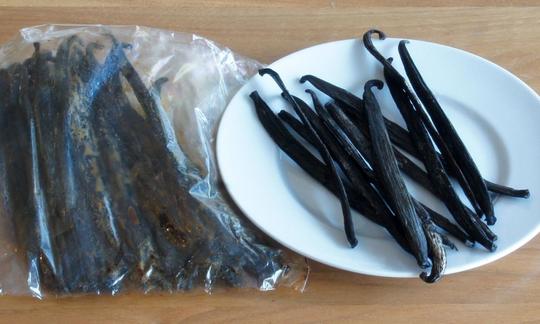

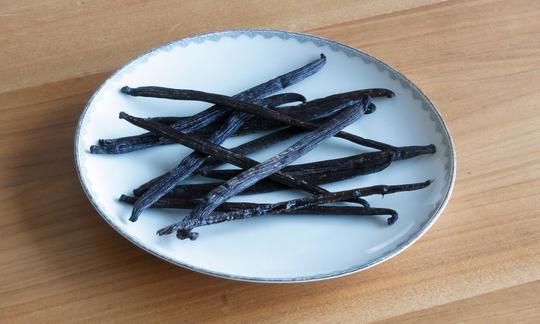

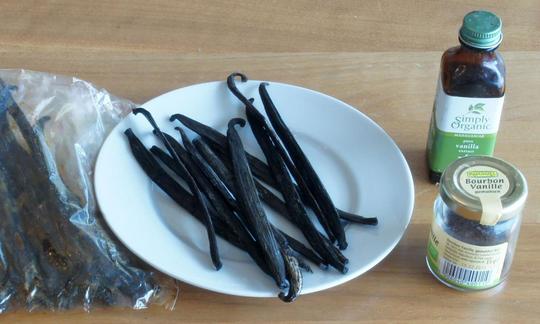

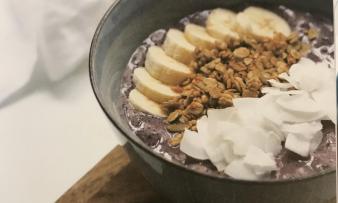
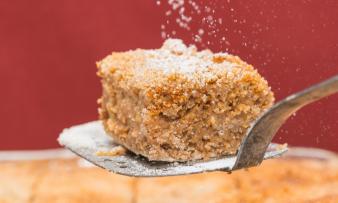
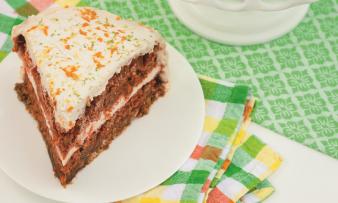





Comments